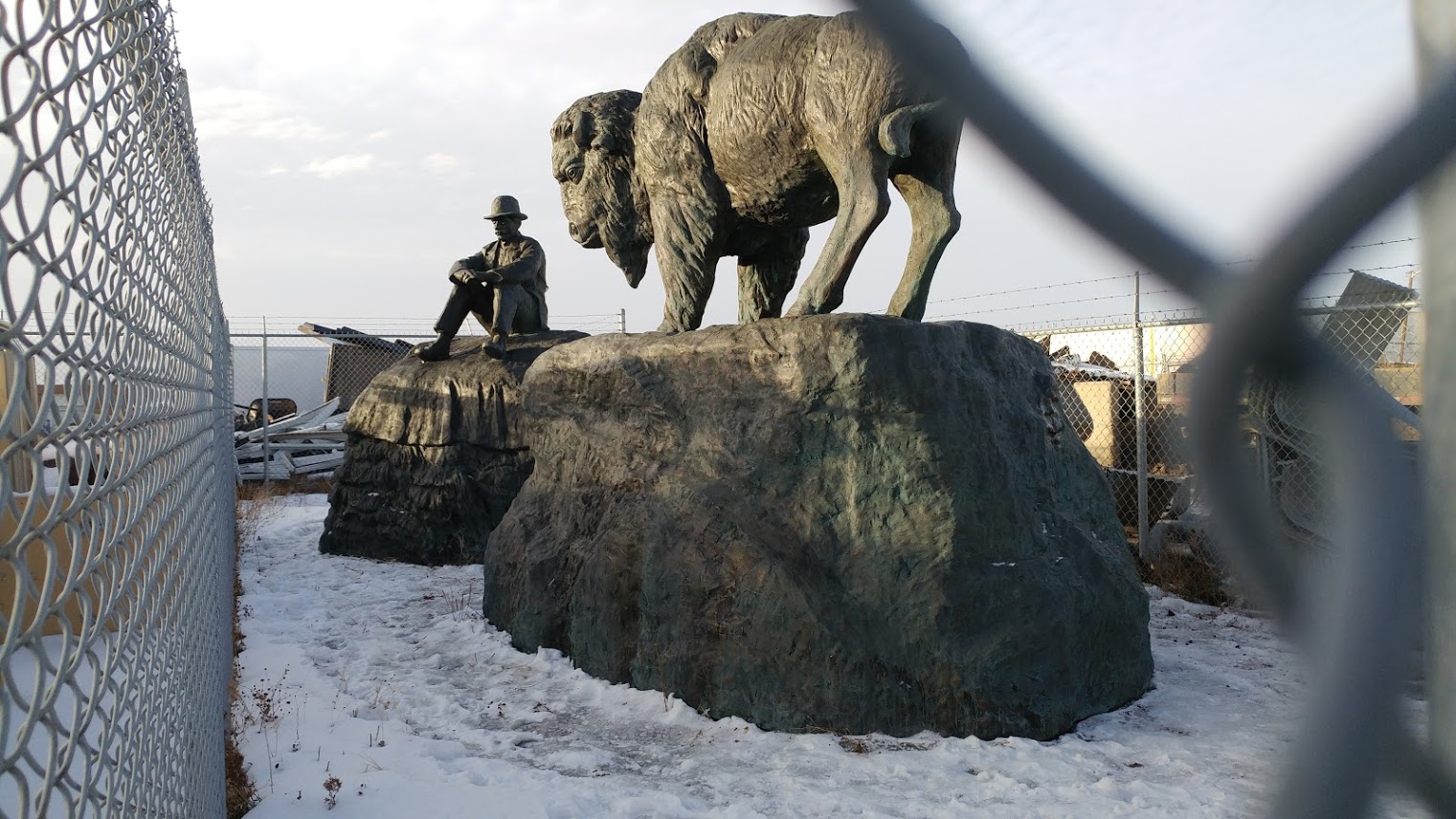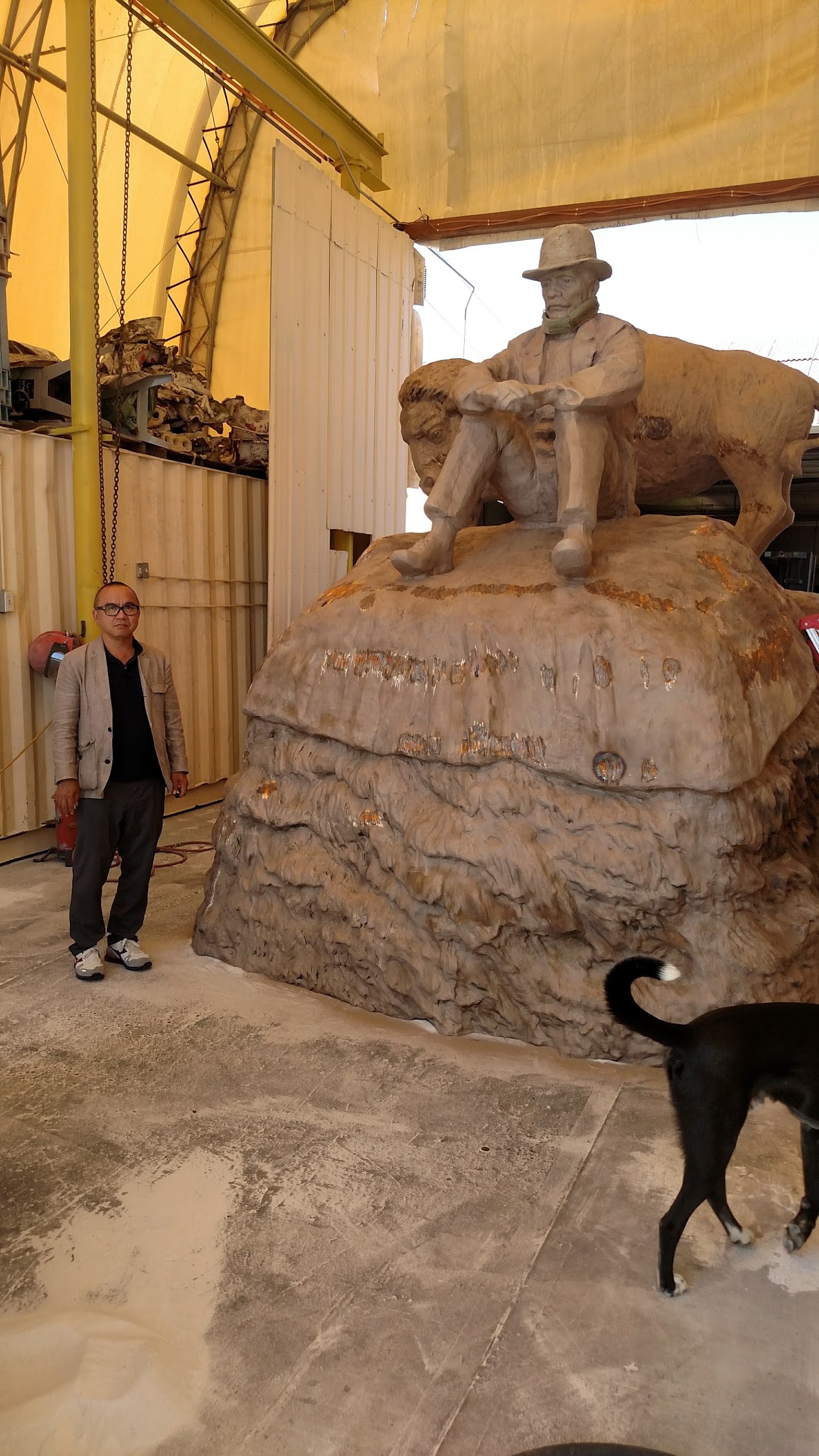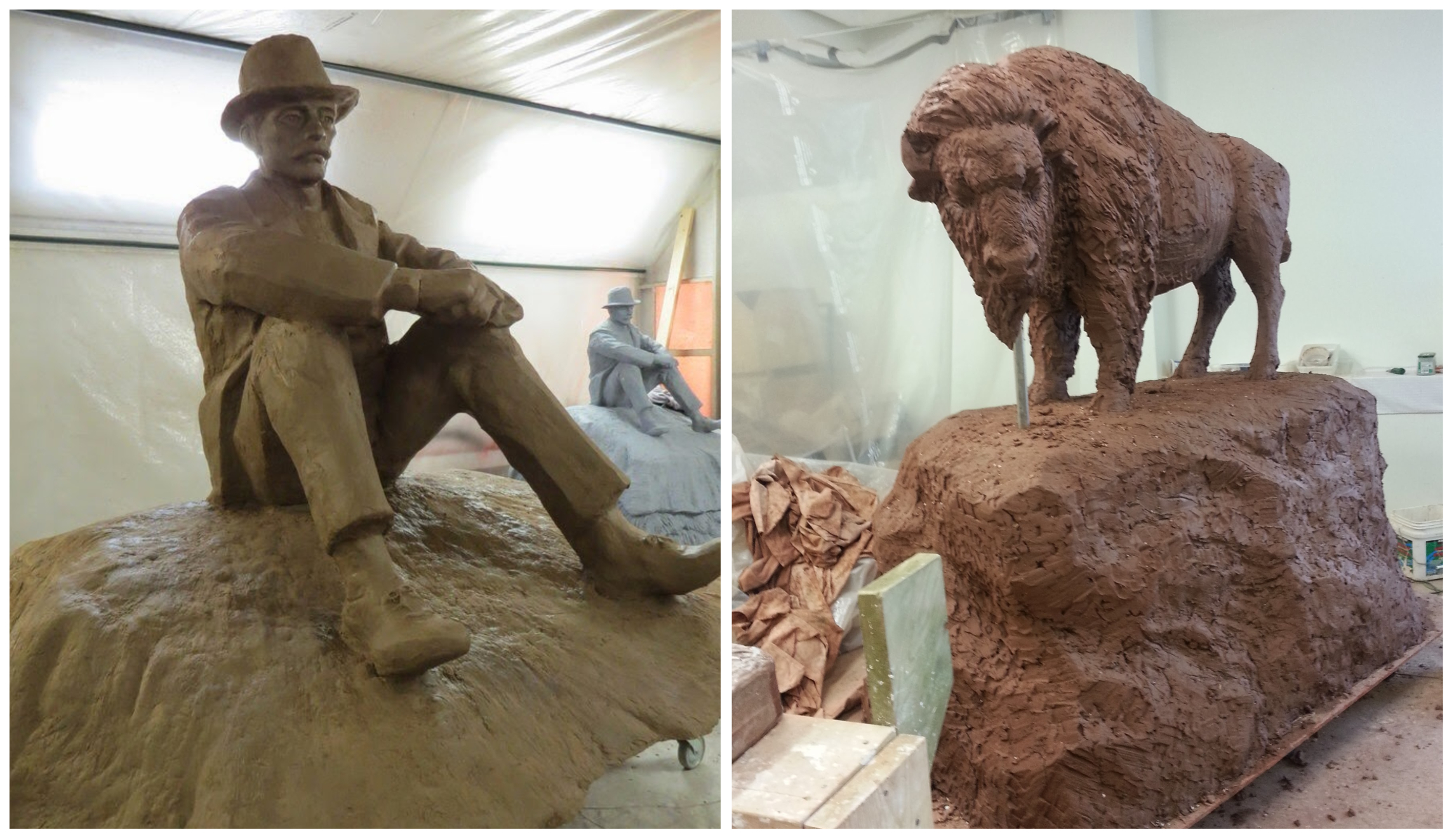Artist Ken Lum is blasting a Canadian city’s decision not to display his artwork criticizing the once prominent fur trade out of fear the artwork could cause offense.
Lum, an award-winning artist with numerous pieces scattered across the world, recently discovered that his artwork highlighting the historical effect of the fur trade would no longer be installed on Edmonton’s Walterdale Bridge — 12 years after it was commissioned and six years after completion. The piece, The Buffalo and the Buffalo Fur Trader, consisted of two 13-foot bronze statues, a bison, and a colonial fur trader, the latter inspired by an old photograph.

Lum envisioned pedestrians walking over the bridge, seeing the statues at both ends, and reflecting on the implications of the extinction of the bison.
“That near-extinction was a kind of warning for all humanity — it’s not just related to First Nation issues, but all humanity — in terms of how can we move forward with urgency today with respect to sustainability,” he said.
NEW YORK MUSEUMS REQUIRED TO PUT SIGNS NEXT TO ART LOOTED BY NAZIS

Lum is proud of his work and believes it is urgent and relevant to the past, present, and future, he said.
“History is only interesting if it illuminates the present and points the way to the future,” Lum said. “That’s the paradox of history.”
However, Francis Asuncion, city communications adviser, wrote in a statement to the Washington Examiner that the art could be misrepresented as a celebration of colonialism.
Asuncion said that between the art’s completion in 2016 and now, the city has engaged in several conversations about indigenous peoples, particularly speaking with First Nations partners at Enoch Cree, Kehewin Cree, and Bigstone Cree Nations.
“In determining the future of the artwork, Administration considered our commitments to and relationships with those most impacted by the artwork — the artist and Indigenous communities in the region,” he wrote.
He referenced the city of Rossdale, located north of Walterdale Bridge — home to the Traditional Burial Grounds and Fort Edmonton Cemetery. The area eventually served as an early site of the Fort Edmonton fur trading post, according to the city’s sacred grounds website.
“Anticipating serious concerns and cultural harm around the artwork, Administration decided, with the help of Indigenous relations specialists, to remove it from the city’s inventory,” Asuncion wrote.
While Asuncion said an email was sent to Lum prior to the public release of the cancellation, Lum said he only heard about the cancellation after several media outlets called him for comment on the news release, to which he responded, “What release?” Eventually, Lum claims, the city called him and they had a meeting over Zoom.
The language the city used to announce the cancellation of his art was preemptive in his eyes, he said, by stating that it “may cause harm and induce painful memories.”
Lum added that he doesn’t believe the city even analyzed the situation prior to their decision and he never was “extended the courtesy” to discuss how the artwork could negatively affect the area.
“They’ve never said, ‘The work is doing this, because …’ right?” he said. “But instead, they come up with language which they consider preemptive, which I think is actually quite authoritarian.”

He made numerous visits to Canada over the span of a year and a half, he said, meeting with and listening to indigenous groups, the city’s art council, and other representatives.
Lum knew, as an artist, that he was walking into meetings with people who “have not been listened to for centuries” and that no amount of listening could ever make up for it, he said.
“The grievance that they may feel has something to do with the entire Canadian state’s paternalistic relationship to them,” he said, “which is not something that my project — which is, on the scale of things, minuscule — could ever fully compensate for.”
The artwork can never fully address the grievances, but it can spark debate, he said — something he thinks the city is scared of.
“You know, some of [art is] interactive, some of it’s fun, but hardly any of it really matters in terms of illuminating us, in terms of urgent questions about society and how our histories are constituted,” he said.
CLICK HERE TO READ MORE FROM THE WASHINGTON EXAMINER
The bison, once a large population of 30 million to 60 million in North America, were wiped out in the late 1800s due to hunting and “indiscriminate slaughter.” By 1888, there were no bison left in the Canadian wild, according to the Wildlife Conservation Society Canada. Lum had hoped his artwork could remind passersby of the depletion of the species.
“You know the old expression ‘never go up against city hall?’” Lum said. “I understand why people say that now.”

